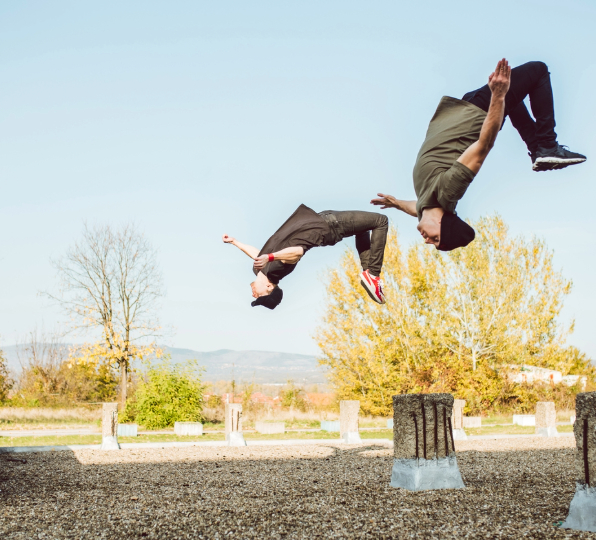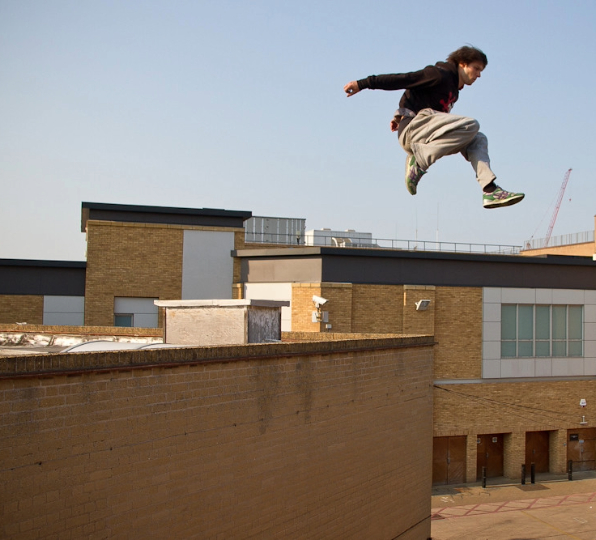Introduction:
With the help of our guide, “Parkour for Beginners: Exploring Urban Fitness Movements,” explore the realm of urban athleticism. By using the environment as a playground, parkour, a dynamic discipline based on movement and efficiency, offers a distinctive approach to fitness. We’ll examine the foundations of parkour, its advantages, and how newcomers can start this thrilling adventure of self-expression, strength training, and overcoming physical barriers in an urban setting.
1. Understanding Parkour
The training discipline known as parkour, also called “the art of displacement,” has its roots in military obstacle course training. It entails getting from point A to point B as quickly as possible while navigating obstacles with just the human body. Traceruses or traceurs, as parkour practitioners are called, emphasize fluidity, speed, and creativity in their movements, transforming the city into a dynamic playground.
2. Benefits of Parkour
Parkour works all of the major muscle groups in the body, making it an all-around workout. It tests not just strength but also dexterity, quickness, and balance.
Parkour’s fluid and dynamic movements increase heart rate, which enhances cardiovascular health and endurance. Parkour training improves a person’s mental and spatial awareness as they move through and engage with their environment. Mastering new movements and overcoming physical obstacles gives practitioners a sense of confidence and accomplishment.
3.Getting Started: Basic Techniques and Movements
Precision jumps improve lower body strength and control by requiring precise landings on predetermined targets. For the purpose of safely absorbing impact during landings and smoothly switching between movements, it is imperative to acquire appropriate rolling techniques. By using hands to provide support while passing through or over obstacles, vaults are effective means of overcoming them. To navigate vertical surfaces and structures and demonstrate the versatility of parkour movements, climbing techniques are crucial.
4.Safety First
Warm up your muscles and joints thoroughly before starting each session to get them ready for the dynamic movements that lie ahead.
Before moving on to more difficult exercises, concentrate on learning the fundamentals and practice at your own pace. Wearing protective gear, such as gloves and supportive athletic shoes, is optional but can increase safety when training.
5.Training Locations: Urban Exploration
Parks, plazas, and urban environments offer a variety of training grounds for parkour maneuvers.
Parkour training can be done in safe, controlled environments at specialized indoor gyms with padded floors and obstacles.
6. Common Mistakes and How to Avoid Them
Injuries can result from rushing through progressions without learning the fundamental movements. Give yourself enough time to lay a solid foundation.
The first priority ought to be safety. Accidents can occur when practicing on uneven surfaces or when trying difficult moves without enough training.
7. Parkour and Everyday Life
Parkour’s useful movements contribute to improved functional fitness, which makes daily tasks easier to handle.
Parkour promotes mindfulness and adaptability in a variety of situations by highlighting the relationship between the mind and body.


Conclusion:
Embarking on the journey of parkour for beginners is not just about physical movement; it’s a transformative exploration of self-expression, resilience, and adaptability. By understanding the basics, prioritizing safety, and immersing oneself in the supportive parkour community, beginners can unlock the potential of urban fitness movements. Whether navigating the cityscape or mastering intricate techniques, parkour offers a dynamic and engaging path to holistic fitness. So, lace up your shoes, find your training ground, and let the urban playground become your canvas for movement and self-discovery.












